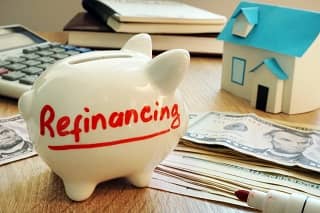Now that you have decided to refinance your mortgage, you need to know how. The refinance process can be divided into three phases:
- Preparing to refinance
- The purpose of your refinance
- Shopping around for the best deal
No. 1: Preparing your refinance documentation
The first step in your refinance is to make sure you have organized all the paperwork and documentation needed to support your refinance application.
Here is a checklist of most of the documentation you will need (note: every lender is different, so requirements could easily vary between lenders):
- Photo I.D.
- Pay stubs: at least a month’s worth
- Asset statements: checking, savings, retirements funds, etc.
- Bank statements for recent large deposits outside of your paycheck
- Two years worth of W2s and tax returns
- A copy of your most recent mortgage statement
- A copy of the original promissory note for your existing mortgage
- Utility bill for proof of address
- A divorce decree if you were recently divorced
- Proof of attendance if you enrolled in a first-time homebuyer education course
When the time comes for you to submit all the paperwork required from your lender or servicer, it is best to send as much of it as you can on the same day to help your loan professional stay organized.
No. 2: Why are you refinancing?
The next step to your refinance is deciding why you are doing it in the first place: Do you want a lower mortgage rate? Do you want to exchange your ARM for a fixed rate? Do you want to lengthen the remaining term of your loan to improve cash flow … or shorten the remaining term to create interest savings? Or, do you need to consolidate several forms of debt into one new mortgage?
It’s important to understand how the loan product and term of your refinance loan will impact your costs and potential savings. For example, while interest rates are lower on a 15-year fixed-rate loan as compared to a 30-year loan, your monthly payment will be higher because the payments are stretched out over a shorter term. Likewise, the lowest interest rate you’re likely to find will come with an adjustable-rate mortgage, but are you willing to sacrifice a lower rate today for potentially higher payments tomorrow? Knowing your goal for refinancing will help you to find the right mortgage product, loan term and combination of interest rates and fees you’ll need to hit that goal.
Here’s a quick look at the advantages and disadvantages of the following refinance loan products:
| Long-term fixed | The 30-year fixed-rate mortgage is the most popular of all mortgages. While its rates are highest among all the products noted here, you can still lock in a low rate for 30 years. Talk about stability! |
| Short-term fixed | 20-year, 15-year and 10-year fixed-rate mortgages are also available. While the interest rates are lower, monthly payments are higher than 30-year terms due to the shorter loan period. |
| Adjustable-rate | While the rates may be lower than their fixed counterparts, your interest rate will adjust (maybe higher, maybe lower) once the fixed-rate portion of the ARM expires. |
| FHA-backed | FHA loan interest rates can be lower than other options, especially if your credit isn't great, and fixed and ARMs are available. The drawback is that mortgage insurance is no longer cancellable. |
| VA-eligible | You must be a qualifying veteran to refinance to a new VA loan. Interest rates are low and no equity is required, but unless you’re a veteran or the spouse of a veteran, no dice. |
No. 3: Shop around
So after your documentation is ready to go and you know the goal of your refinance, it’s time to see which lender can give you the best deal.
You should contact mortgage lenders and brokers on the same day, preferably at about the same time of the day (not some in the morning, some in the afternoon) to compare interest rates and fees. Remember, the interest rate is only one component of the transaction, so be sure to discuss the fees, a.k.a the cost of your refinance, as it will determine how long it takes you to pay off the cost of the refinance and begin to see some monthly savings. You should expect a refinance to cost you about 2 percent of your loan amount.
There are tradeoffs between interest rates and fees, and benefits and drawbacks to the different means of paying for your refinance. HSH.com’s Tri-Refi refinance calculator allows you to do a side-by-side comparison, showing you the best way to pay for your mortgage refinance.
Related: Shop mortgage lenders and refinance offers



